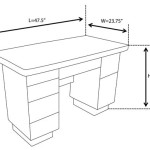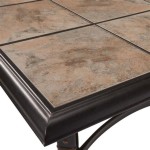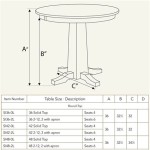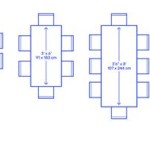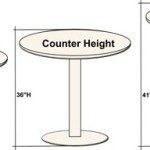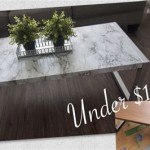How Big Is A Pool Table Supposed To Be?
The dimensions of a pool table are not arbitrary. Standardized sizes and dimensions are crucial for ensuring fair play, consistent gameplay, and adherence to established rules across different leagues and tournaments. Different sizes cater to varying space constraints and skill levels, making the choice of size an important consideration for both casual players and serious competitors.
Understanding the different pool table sizes and their respective ideal environments is essential for making an informed purchase. This understanding extends beyond just the overall dimensions, encompassing the playing surface size, the rail height, and the pocket size. Each of these elements contributes to the overall playing experience and affects gameplay strategy.
The standards governing pool table sizes are set by organizations like the Billiard Congress of America (BCA). These standards provide guidelines for professional tournaments and ensure consistency in equipment specifications. While adhering to these standards is not always mandatory for recreational players, they offer a benchmark for quality and performance.
Regulation Size: The 9-Foot Table
The 9-foot pool table, often referred to as a regulation size table, is the standard for professional tournaments and serious players. Its dimensions are typically around 50 x 100 inches for the playing surface, with an overall footprint that's significantly larger. This table size provides ample space for strategic play and long shots, demanding a higher level of skill and precision.
Due to its size, a 9-foot table requires a substantial amount of room. A minimum room size of 14 x 18 feet is generally recommended to accommodate the table and allow players enough space to comfortably maneuver around it with cues. Smaller rooms will severely restrict gameplay and make certain shots impossible.
The larger playing surface of a 9-foot table encourages more strategic gameplay. Players have to consider longer distances, angles, and the effects of spin more carefully. This size also favors players with a strong break and the ability to control the cue ball effectively across longer distances.
The pocket size on a 9-foot table is typically smaller compared to smaller tables. This requires increased accuracy and precision when aiming and pocketing balls. The tighter pockets further challenge players and add to the overall difficulty of the game.
When considering a 9-foot table, it's crucial to factor in not just the initial cost of the table itself, but also the cost of professional installation and maintenance. The slate, which forms the playing surface, is heavy and requires skilled handling to ensure proper leveling and installation. Regular maintenance, such as refelting, is also necessary to maintain optimal playing conditions.
The Common Choice: The 8-Foot Table
The 8-foot pool table represents a compromise between regulation size and space constraints. With a playing surface of approximately 44 x 88 inches, it offers a good balance between playability and practicality for many homes and recreational settings. It's a popular choice for both casual players and those who want a more challenging experience than smaller tables provide.
An 8-foot table requires less room than a 9-foot table, making it a more viable option for many homes. A minimum room size of 13 x 17 feet is generally recommended. This provides sufficient space for playing comfortably without feeling cramped.
The gameplay on an 8-foot table is still challenging, although not as demanding as on a 9-foot table. The shorter distances allow for more open breaks and easier shots, making it suitable for a wider range of skill levels. However, strategic thinking and cue ball control are still important for success.
The pocket size on an 8-foot table tends to be slightly larger than on a 9-foot table, making it somewhat easier to pocket balls. This can be beneficial for beginners and casual players who are still developing their accuracy and aiming skills.
The cost of an 8-foot table is generally lower than that of a 9-foot table, making it a more affordable option for many buyers. Installation is also typically less complex and less expensive, although professional installation is still recommended to ensure proper leveling and performance. Maintenance requirements are similar to those of a 9-foot table, including regular refelting.
Space Savers: The 7-Foot Table and Smaller
7-foot and smaller pool tables are designed for smaller spaces, such as apartments, game rooms, or recreational areas with limited room. While they don't offer the same level of playability as larger tables, they provide a fun and convenient way to enjoy the game of pool in areas where space is a premium.
A 7-foot table has a playing surface of approximately 39 x 78 inches, requiring a minimum room size of around 12 x 16 feet. Smaller tables, such as 6-foot tables, can fit in even smaller spaces. These smaller tables are often found in recreational settings like dorm rooms or community centers.
Gameplay on smaller tables is significantly different from that on larger tables. The shorter distances and smaller playing surface make shots easier and promote a faster-paced game. Strategic play is less emphasized, and the focus is more on making shots and having fun.
The pocket size on smaller tables is often larger than on larger tables, further simplifying the game and making it more accessible to beginners. The larger pockets compensate for the shorter distances and less precise aiming.
Smaller tables are typically more affordable than larger tables, and installation is often simpler and less expensive. Some smaller tables are even designed to be portable or foldable, making them easy to store when not in use. However, the quality of construction and materials may be lower compared to larger, more expensive tables.
The selection of a pool table size is not solely determined by available space. The intended use of the table also plays a significant role. A serious player looking to hone their skills for competition would naturally gravitate towards a 9-foot table. Conversely, a family seeking a recreational activity would likely find an 8-foot or even a 7-foot table more suitable.
The material used in the construction of a pool table also influences its size and weight. Slate, being the preferred material for tournament-grade tables, adds considerable weight requiring a robust frame and well-supported flooring. The thickness of the slate also contributes to the overall stability and playing surface trueness. Less expensive tables may utilize wood or composite materials, making them lighter and potentially allowing for slightly smaller dimensions while maintaining adequate playability.
The aesthetic appeal of a pool table can also play a part in the selection process. A larger table, particularly a well-crafted one, can become a focal point in a room, adding a touch of elegance and sophistication. Smaller tables, while primarily functional, can also be chosen to complement the existing decor of a space.
The long-term maintenance requirements of a pool table should also be considered when choosing a size. Larger tables, with their more complex construction and heavier slate, may require more specialized maintenance and repairs. Smaller tables, while generally requiring less maintenance, may be more prone to wear and tear due to their simpler construction.
Budget is another factor to consider. Regulation-sized tables tend to be substantially more expensive than smaller tables, both in terms of initial purchase price and ongoing maintenance costs. It is crucial to establish a budget beforehand and research tables that fall within that range while still meeting the desired quality and playability standards.
Ultimately, the ideal pool table size depends on a combination of factors, including available space, intended use, budget, and personal preferences. By carefully considering these factors, it is possible to choose a table that provides years of enjoyment and enhances the overall playing experience.

Correct Pool Table Dimensions To Leave Enough Room For Playing Billiard

What Is The Standard Size Of A Pool Table Blatt Billiards

Pool Table Room Size Billiards Com Inc

American Pool Vs English Home Leisure Direct

What Size Is A Regulation Pool Table Blatt Billiards

Diamond Pool Tables Pro Am Professional Smart Table Paragon House Cues Parts Billiards Equipment

Eight Ball Wikipedia
If A Player Hits The 8 Ball Before Target Is It Foul Or Loss Quora

How To Rack In 8 Ball 10 Steps With S Wikihow

What Are The Rules Of Snooker How To Play Scoring Table Size And Differences With Pool Sporting News

